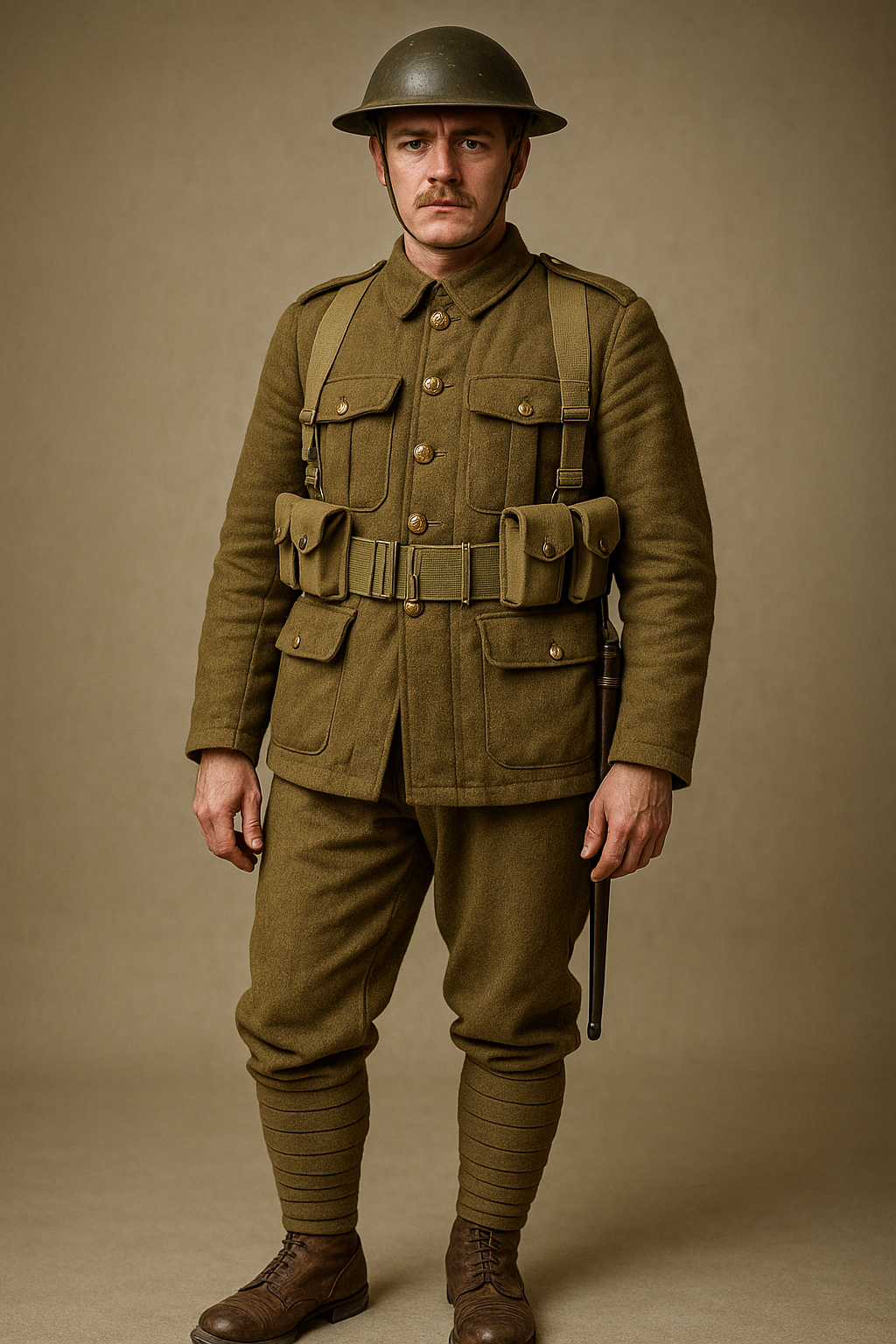
British Soldier Uniform WWI: A Legacy of Valor and Design
Published on Jul 02, 2025
British Uniform WWI: A Deep Dive Into Military Heritage
Introduction
The British soldier uniform during World War I symbolizes endurance, discipline, and national identity. It’s more than just fabric stitched for battle—it's a canvas painted with history. From the trenches of the Western Front to the skies with the Royal Flying Corps, every element of the WWI British military outfit tells a story.
As historical interest grows and reenactments become more popular, accurate representations of uniforms like the WW2 British soldier uniform, World War 1 pilot costume and Grenadier Guards uniform are increasingly sought after. At Paddelaters.com, we proudly provide high-quality, historically accurate military uniform reproductions that honor the past.
The Anatomy of the British Soldier Uniform WWI
During the First World War (1914–1918), the British Army underwent significant changes in tactics and appearance. The standard infantry uniform was both functional and symbolic.
1. Service Dress Tunic
The hallmark of a British soldier in WWI was the Service Dress tunic, introduced in 1902. Made from heavy wool serge in khaki drab, it was designed for camouflage and warmth. The high stand-and-fall collar, pleated breast pockets, and five brass General Service buttons were key identifiers.
2. Trousers and Puttees
Soldiers wore matching khaki trousers paired with puttees—long wool strips wound around the lower leg for protection and support. This ensemble not only provided mobility but also minimized ankle injuries.
3. Webbing and Equipment
The 1908 Pattern Web Equipment replaced earlier leather gear. Made from woven cotton, it was lighter and easier to maintain in wet conditions. Soldiers carried ammunition, entrenching tools, water bottles, and gas masks within this webbing.
4. Headgear
The iconic Brodie helmet, introduced in 1915, offered essential protection from shrapnel. Before that, the soft field service cap was more common but less protective.
How the WWI Uniform Influenced the WW2 British Soldier Uniform
The transition from WW1 to WW2 British soldier uniforms wasn’t drastic but focused on practicality and modern warfare needs. The khaki palette remained, but tailoring and materials evolved:
- WW2 uniforms introduced battledress with a shorter blouse, wool trousers, and better pocket placement for equipment.
- Helmets were improved with broader brims and liners.
- Footwear was modernized, and gaiters replaced puttees.
While WW2 uniforms were more utilitarian, their design DNA traces back to the trench-tested WWI garments.
World War 1 Pilot Costume: Taking to the Skies
The rise of aerial combat brought about a distinct military style. A World War 1 pilot costume was vastly different from the infantryman’s outfit:
Key Features:
- Leather flying jackets and sheepskin-lined coats for warmth at high altitudes
- Goggles and leather helmets for eye and head protection
- Flying boots that reached mid-calf, often fleece-lined
- Fur-lined gloves for frost protection
These uniforms not only kept pilots warm in open cockpits but also established an iconic look that is now replicated in reenactments and aviation history events.
Grenadier Guards Uniform: Tradition in Every Thread
Among the most recognized military outfits in the world, the Grenadier Guards uniform carries ceremonial significance and deep historical roots.
Uniform Elements:
- Scarlet tunic with polished brass buttons in a single row
- Bearskin cap, standing over 18 inches tall
- Dark blue trousers with a red stripe
Although today it's seen during the Changing of the Guard at Buckingham Palace, this uniform has seen combat since the Napoleonic Wars. Its presence in WWI as a dress uniform reinforced morale and tradition amidst the chaos of war.
WW1 German Uniform Reproduction vs British Uniform
Collectors and reenactors often compare WW1 German uniform reproductions with British counterparts:
Feature British Uniform WWI German Uniform WWI
Color Khaki Drab Field Grey (Feldgrau)
Helmet Brodie Helmet Pickelhaube / Stahlhelm
Webbing Cotton 1908 Pattern Leather Belt & Y-straps
Functionality High Mobility Strong Protection
Each style reflects the military doctrine and industrial resources of its time. Both are immensely valuable for historical study and accurate reenactment.
Why Choose Authentic Reproductions?
Modern enthusiasts, collectors, and historians turn to reproduction uniforms to:
- Participate in reenactments and historical events
- Curate museum displays or private collections
- Celebrate ancestral military service
- Create authentic film or theatre costumes
At Paddelaters.com, we specialize in premium, durable, and historically faithful replicas—from the British soldier uniforms of WWI to WW2 and WW1 German uniform reproductions.
Conclusion
The British soldier uniform in WWI is more than just military gear—it's a testament to the bravery and resilience of a generation. From trench warfare to aerial battles, every stitch and strap had a purpose, shaping the future of military design.
Whether you're looking to step into history through a World War 1 pilot costume, honor the Grenadier Guards uniform, or compare it to a WW1 German uniform reproduction, our collection at Paddelaters.com brings history to life with accuracy and respect.
FAQs
Q1: Are the WWI British uniforms accurate for reenactments?
Our uniforms follow precise historically designs, perfect for reenactments or displays.
Q2: Can I find WW1 and WW2 uniforms in multiple sizes?
Absolutely. We offer a wide range of sizes and even custom tailoring options.
Q3: Do you ship internationally?
Yes, we ship worldwide with fast, tracked delivery.
Q4: What’s the difference between WW1 and WW2 British uniforms?
The biggest differences are in material, cut, and equipment functionality. WW2 gear was more refined for mobility and mass production.
